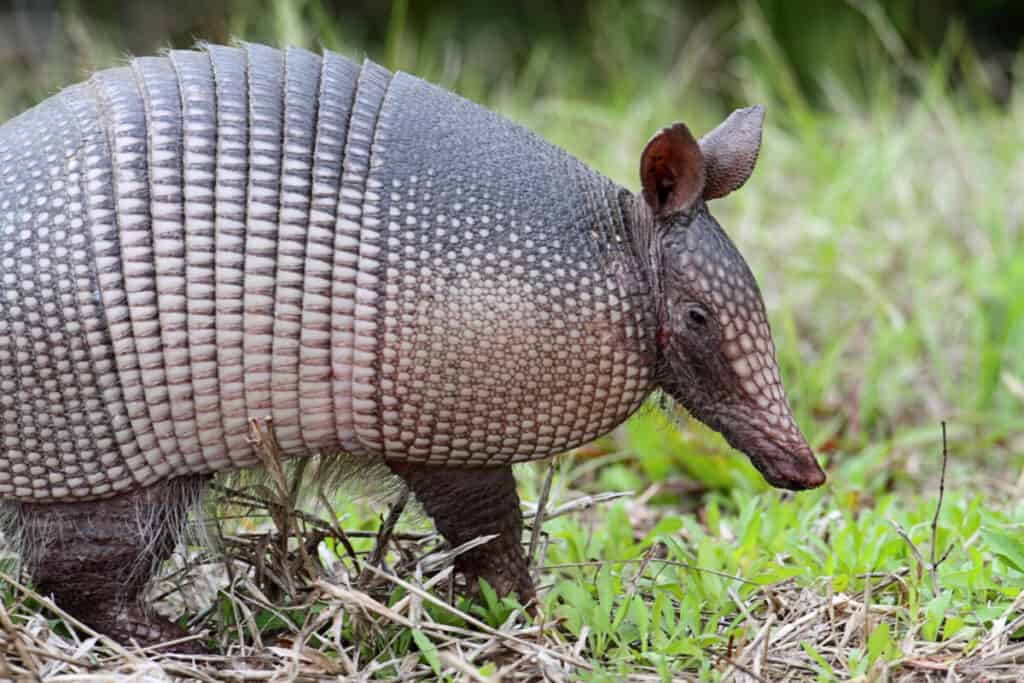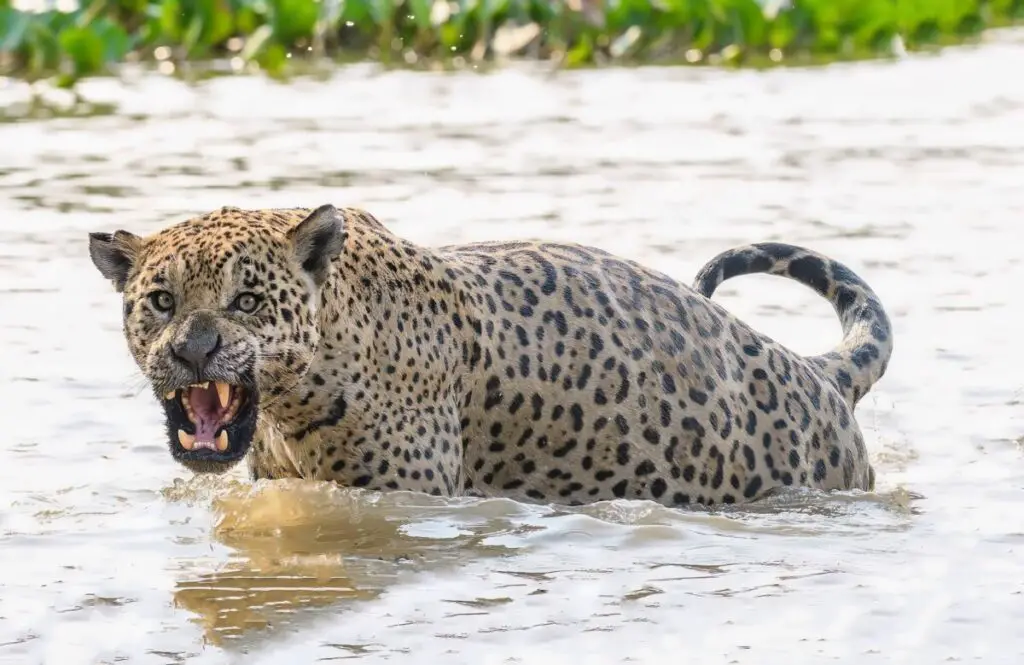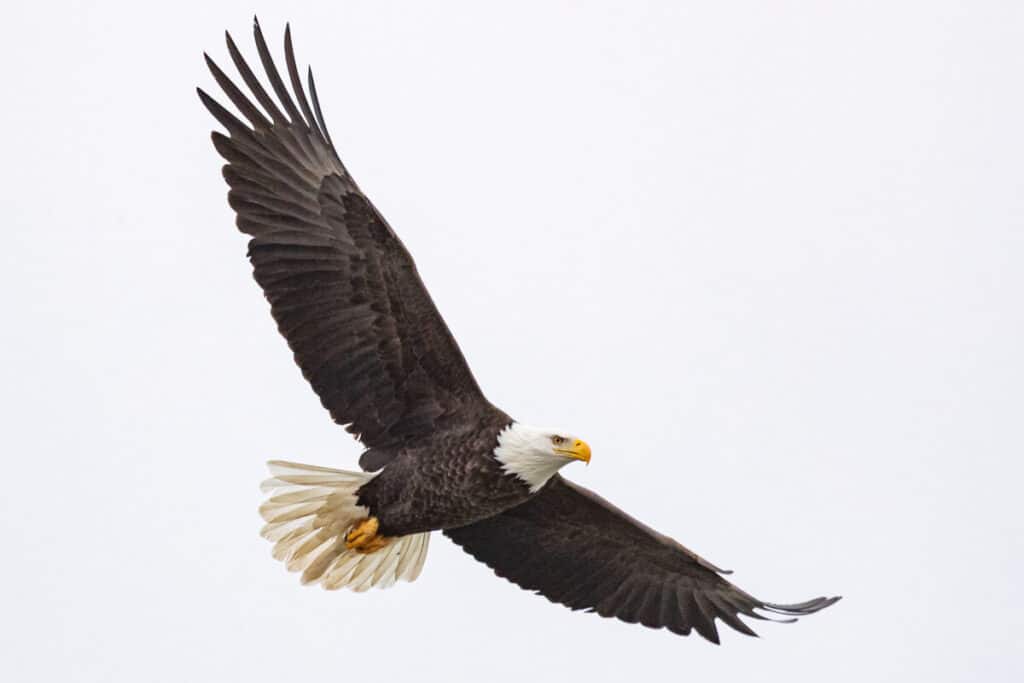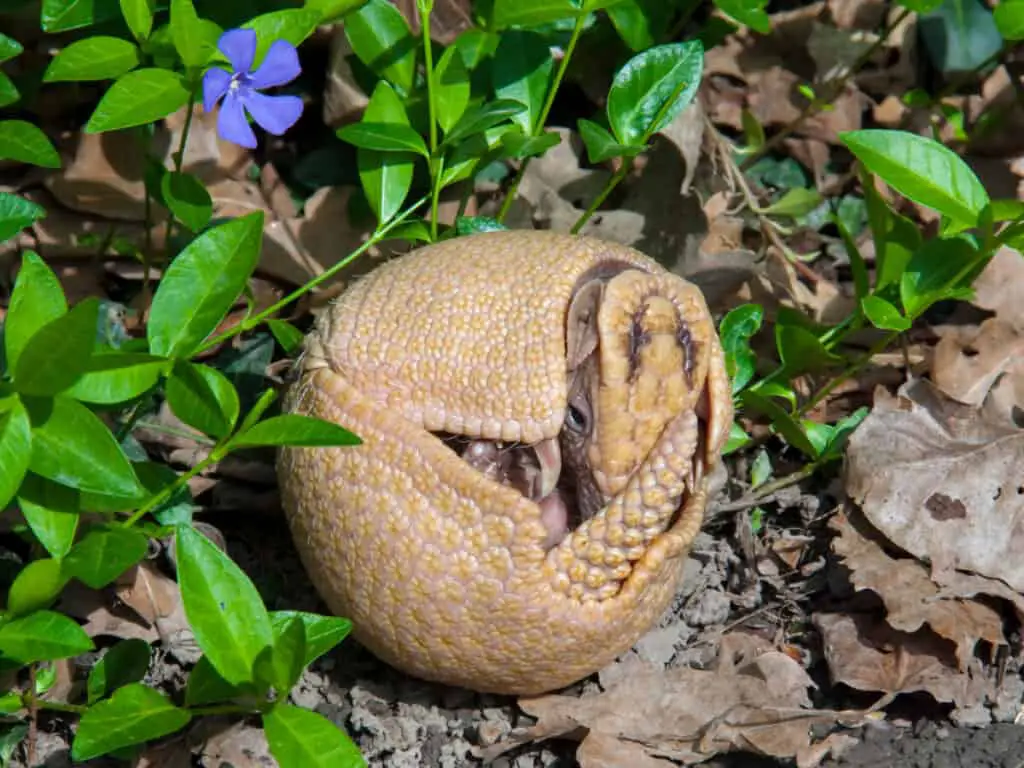Armadillos are small, burrowing mammals that belong to the family Dasypodidae. These animals are found throughout Central and South America as well as some parts of North America. Armadillos have a unique physical appearance with their armored shell-like skin that serves as protection from predators and environmental elements.
Despite their protective armor, armadillos still face threats in their natural habitat. The existence of predators is one such challenge that these creatures must deal with on a daily basis.
Understanding who preys upon armadillos can provide valuable information for conservationists working towards protecting this species.
This article will explore the various predators of armadillos and examine how they impact the survival of these fascinating creatures.

The Role Of Predators In The Ecosystem
Predator-prey relationships play a crucial role in the functioning of ecosystems. Predators help regulate prey populations by consuming weaker and slower individuals, which maintains the balance between predator and prey species.
This relationship also ensures that prey populations do not exceed their carrying capacity, preventing overgrazing or other ecological consequences.
However, when predators are lost from an ecosystem due to human activities such as hunting or habitat destruction, there can be significant impacts on ecosystem functioning.
The loss of top predators can lead to increased herbivore populations, which may cause changes to vegetation communities and alter nutrient cycling processes.
Additionally, the absence of predators can result in cascading effects throughout the food web, leading to population declines or even extinctions of other species.
Thus, understanding and conserving predator-prey relationships is essential for maintaining stable and healthy ecosystems.
The Lifecycle of Armadillos: A Journey of Armor and Adaptation
Natural Predators Of Armadillos
Armadillos, while known for their tough armor-like skin and unique physiology, are not impervious to predators. In fact, a number of animals have adapted to prey on these creatures in the wild. Factors affecting armadillo predation include habitat loss, climate change, and human development.
As armadillos rely heavily on burrowing behavior for protection from predators, changes in their environment can make them more vulnerable to attack. Despite being equipped with natural defenses such as bony plates and sharp claws, armadillos also have developed adaptations to evade predators.
One such adaptation is their ability to jump straight up into the air when threatened by a predator. This action startles potential attackers and gives the armadillo an opportunity to escape. Additionally, they may employ strategies like playing dead or curling up into a ball if caught off guard. These self-preservation tactics allow armadillos some degree of protection against even the most formidable predators in their ecosystem.
It is clear that despite their impressive defensive mechanisms, armadillos face threats from several natural predators. The factors influencing this predation highlight the importance of preserving natural habitats and reducing human interference in order to maintain biodiversity and protect species like the armadillo from extinction.

Jaguars And Pumas
Natural predators play an essential ecological significance in maintaining the balance of our ecosystem. The armadillo, being one of the prey species, has its fair share of natural predators that hunt it down for food. Some common predators include coyotes, bobcats, and foxes. These predators use their hunting behavior to track down and kill armadillos.
However, in regions where large carnivores such as jaguars and pumas exist, they pose a significant threat to armadillos’ survival. Jaguars are known for their exceptional ability to take on tough-shelled animals like turtles and armored mammals like armadillos. They are powerful hunters with sharp teeth that can crush through shell-like armor with ease.
Similarly, Pumas also have been observed preying on armadillos using their stealthy stalking abilities to sneak up on unsuspecting prey before delivering a fatal bite. Such apex predators play crucial roles in controlling herbivore populations while providing other ecological benefits to their ecosystems.

Eagles And Hawks
Birds of prey, such as eagles and hawks, are known for their hunting habits. They have sharp talons to grasp onto their prey and a strong beak to tear apart the meat. These birds have excellent eyesight that helps them spot their prey from great distances while flying high in the sky. Once they spot their target, they dive down at incredible speeds with precision accuracy to catch it.
Eagles and hawks are found all over the world and inhabit various types of geographical regions. Some species prefer living near water sources like rivers or lakes, while others live in open grasslands or forests.
The bald eagle is one such bird often associated with North America’s image because of its range extending across most parts of Canada and the United States. Similarly, red-tailed hawks can be found throughout North America, Central America, and South America.
Overall, these birds are an important part of many ecosystems worldwide due to their role as apex predators.

Dogs And Cats
Domestic dogs may view armadillos as prey and attempt to chase or attack them. Armadillos have a natural instinct to protect themselves by rolling into a ball when threatened, which can make it difficult for dogs to harm them. However, if a dog is persistent enough, it may be able to injure or kill an armadillo.
Cats, on the other hand, are less likely to pose a threat to armadillos due to their smaller size and different hunting strategies. While cats may occasionally hunt small rodents or birds, they typically do not view armadillos as prey. Instead, cats may see armadillos as intruders in their territory and try to scare them away with vocalizations or physical aggression. This territorial conflict can lead to altercations between cats and armadillos but is generally not life-threatening for either species.
Unveiling the Sensory Abilities of Armadillos: How Good Are Their Senses?
Human Impact On Armadillo Populations
Although domestic animals like dogs and cats can pose a threat to small wildlife, armadillos face more significant predators in their natural habitats. These armored creatures have several natural enemies that they encounter daily, including jaguars, pumas, eagles, and humans.
Human-wildlife conflict is one of the most significant threats facing armadillo populations today. Habitat destruction due to urbanization has resulted in many species losing their homes or being pushed into smaller territories. This displacement leaves them vulnerable to predation from larger animals such as dogs and cats.
Human activity also contributes to habitat fragmentation, which further exacerbates these issues by isolating populations and making it difficult for them to find food or mates. As we continue to encroach on wild lands, we must be mindful of our impact on native species like the armadillo and take steps towards conservation efforts that will help protect them from extinction.
The Sensory World of Aardvarks: How Good Are Their Senses?

Conservation Efforts To Protect Armadillos From Predators
Conservation efforts are crucial in protecting armadillos from their natural predators.
Armadillos have a variety of predators, including large carnivorous mammals such as jaguars, mountain lions, and coyotes. They are also preyed upon by birds of prey like eagles and owls.
Conservation strategies that prioritize habitat protection can be implemented to prevent further decline of the species.
One effective conservation strategy for protecting armadillos is through land management practices that aim to protect their habitats. This includes preserving forests and grasslands where they live and ensuring that these areas remain free from human encroachment or development.
Another important approach is reducing hunting pressure on wild populations by regulating harvests and creating protected areas where the animals can thrive without fear of predation or exploitation.
Additionally, educating local communities about the importance of conserving armadillo populations can help raise awareness about this unique species and promote better conservation practices among residents living near them.
Overall, it is clear that there is much work to be done in order to preserve armadillo populations against their various predators. However, with careful planning, implementation of sound conservation strategies such as habitat protection measures coupled with public education campaigns could go a long way towards ensuring the survival of these fascinating creatures for generations to come.
Conclusion
Predators play a crucial role in maintaining balance within ecosystems, and armadillos are no exception. Natural predators of armadillos include large carnivores such as jaguars and pumas, birds of prey like eagles and hawks, and domestic animals including dogs and cats.
Despite being armored with tough shells, armadillos face significant threats from natural predators. Large carnivores like jaguars and pumas can easily break through their armor with powerful jaws and sharp teeth. Meanwhile, birds of prey use their talons to grab smaller sized armadillos from above. Domestic animals may not be able to penetrate their armor but can still kill or injure armadillos through bites or scratches.
Human activities like habitat loss, hunting, and vehicle collisions have led to declines in the populations of some species of armadillo. Conservation initiatives like protected areas for wildlife habitats aim to mitigate these effects by providing safe spaces for armadillos to thrive without human interference.
By implementing measures that protect both predator and prey populations, we can ensure the continued biodiversity of our planet’s ecosystems.

